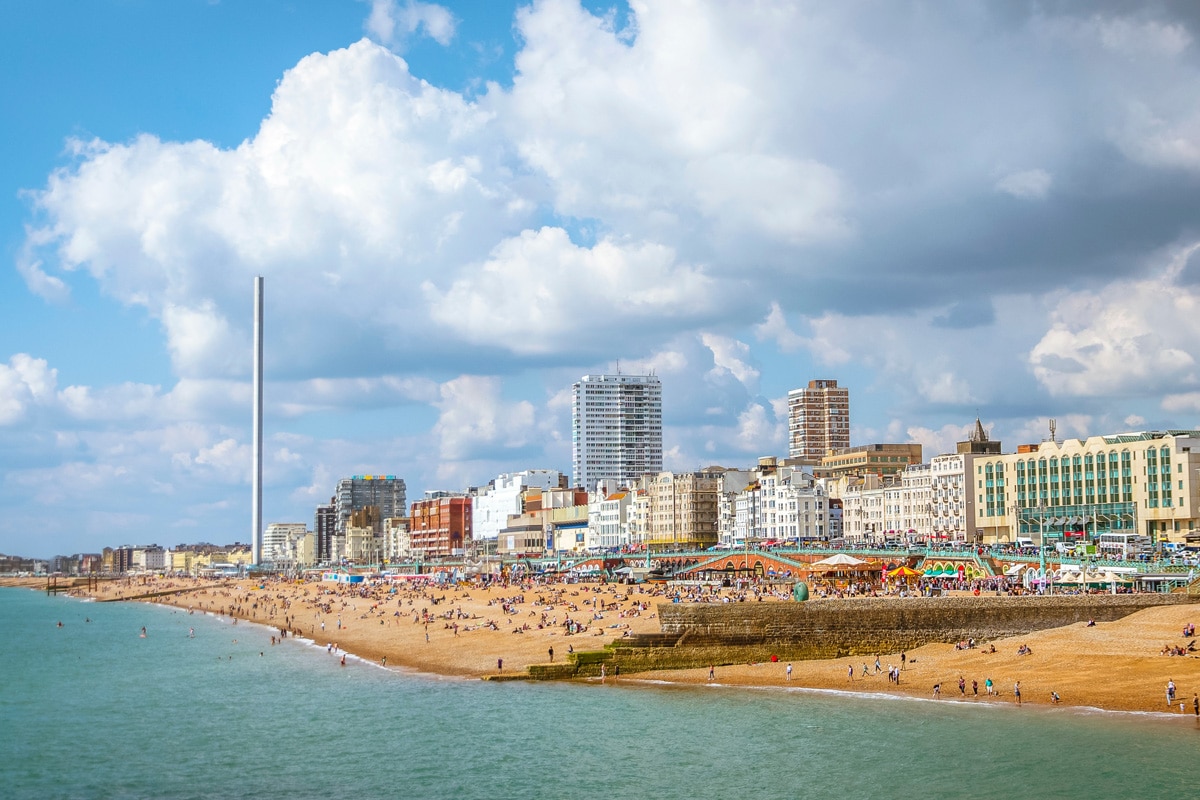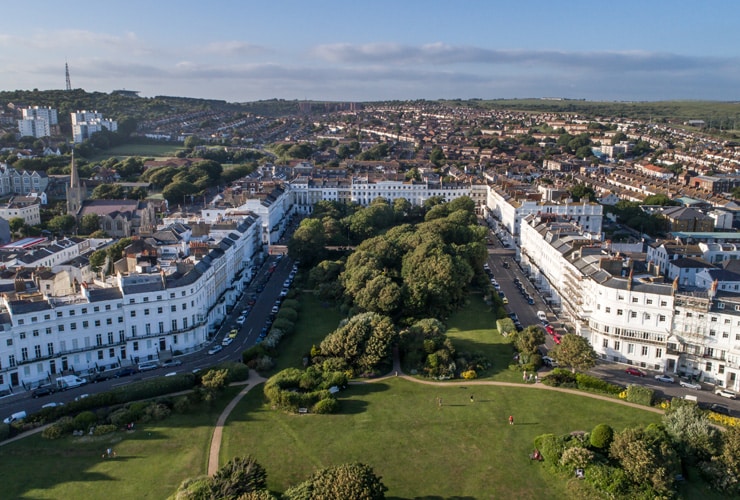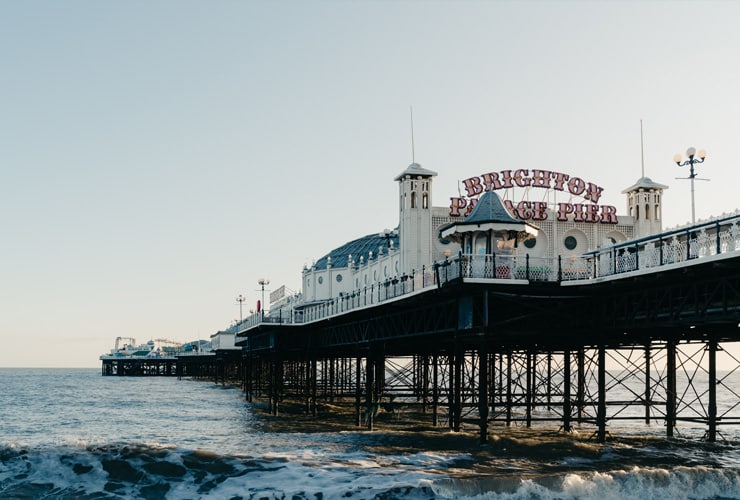Areas of Brighton and Hove: Buy-to-Let Property Investment Hotspots

-
by Robert Jones, Founder of Property Investments UK
With two decades in UK property, Rob has been investing in buy-to-let since 2005, and uses property data to develop tools for property market analysis.
Brighton is the place that offers not just the best of both worlds... but the best of ALL worlds for residents and property investors alike! Brighton has the sea, but it’s also fringed by rolling countryside.
Why Invest in Brighton?
Brighton has all the big city amenities, yet it’s relaxed and even a bit quirky too. It’s close enough to London for those who love London... but far enough away for those who don’t.
That’s both good and bad news for property investors. Good news because the demand for property – and the rent you can earn – is enormous. In some ways, it’s bad news because property here isn’t cheap. But, for savvy investors who are willing to shop around, there can still be good deals to be had.
Although it’s often thought of as a town, Brighton received city status in 2001 – alongside the neighbouring town of Hove – meaning it is officially the City of Brighton and Hove. Something that has helped elevate its status as a property investment destination. In 2023 the population of the city area is estimated to be around 290,885 and the population of the urban area is estimated to be 290,885.
Brighton is, of course, well known as a seaside resort. That means it has a huge tourist and visitor trade, which supports the demand for accommodation: Brighton is a top tourist destination with 462,000 visitors in 2021/22, a number which is ever so slightly down on previous years due to the pandemic restrictions that were in place at that time.
But Brighton isn’t all about candy floss and sandy beaches... or rather in Brighton’s case pebbly ones. It has a thriving business sector. The 2023 Centre for Cities Report ranks Brighton as the country's number-two hotspot, in terms of the number of businesses per capita and the number of business start-ups. Amongst other things Brighton has a significant financial services sector – American Express is the largest private employer in the city.
Brighton is also a large student centre. The University of Brighton has around 18,000 students and three campuses in Brighton plus one in Eastbourne. The University of Sussex also has about 18,000 students. However, Brighton is a tricky place for students to find accommodation, so there’s good scope for student landlords. Areas popular for Brighton student accommodation include the famous Lewes Road, Hanover, Poets Corner, Moulsecoomb, Bevendean, Coldean and Kemptown.

Amenities
Brighton’s almost idyllic position, between the sea and South Downs, makes it really popular with families and retirees. But Brighton is no faded seaside town... It’s also very popular with young and fashionable people too.
Brighton also has great access to London – one of the reasons it’s sometimes called London on Sea. That’s because it’s said to have a London-type lifestyle with the kind of higher-end shops, bars, restaurants and cultural facilities that’d you expect in the capital.
In fact, Brighton has been nominated as the most hipster city in the world, beating places like Portland and Seattle in the USA – based on the number of record shops, vintage boutiques, vegan restaurants and tattoo parlours per 100,000 residents! Odd maybe, but it’s more good news for investors.

Property Values
Brighton and Hove has higher than average property prices. According to Rightmove, the average house price here is a steep £530,218. However, that doesn’t mean Brighton isn’t affordable to investors. Look on property portals like Rightmove and Zoopla and you’ll find Brighton property prices start from around £90,000.
And remember, areas with higher property prices usually mean higher rents and so Brighton yields can be just as attractive as cheaper locations if you buy carefully.
An interesting thing to know is that Brighton is one of the most popular cities for those moving out of London. That helps to keep Brighton rents and property prices buoyant.
Average Property Price (Price Paid) by Postcode Area
Last updated: May 2024
Data from HM Land Registry
| Postcode District | Average Property Price |
|---|---|
| BN1 | £394,874 |
| BN2 | £427,716 |
| BN3 | £556,424 |
| BN6 | £676,890 |
| BN7 | £595,194 |
Rental Demand
Brighton is one of the most difficult and expensive places in the UK to rent a home, only just behind London and Oxford. While that’s not great news for people who rent it means Brighton landlords are unlikely to be short of tenants.
Recent figures show that rents in Brighton and Hove have fallen slightly over the last two years but as of September 2022, the average rent was still £1,281/ month, compared to an average UK monthly rent (excluding London) of £1,027.
Brighton is one of the most popular locations in the country for Airbnb rentals, with a very high occupancy rate. So this could be an opportunity for more enterprising landlords to consider.
Average Rental Yield by Postcode Area
Rental yield is the rental return an investor can expect on their investment once costs have been taken into consideration.
Last updated: May 2024
| Postcode District | Average Rental Yield |
|---|---|
| BN1 | 4.7% |
| BN2 | 6.5% |
| BN3 | 4.1% |
| BN6 | 2.9% |
| BN7 | 3.2% |
Brighton Population Growth
This interactive line chart visually represents the population growth for Brighton from 1995 to 2035, with actual data up to 2023 and projected growth from 2023 onwards.
Source: World Population Review
Landlord Licensing
If you’re thinking of getting into the HMO business you need to know that Brighton and Hove City Council has an Article 4 Direction covering some areas and is looking to extend the areas covered. So you may need planning permission to turn a house into an HMO or shared house.

Property Investment in Brighton
Although any guide like this is a generalisation, here are a few pointers on the different areas of Brighton for property investors.
City Centre
Population: 17,000
Average House Price: £481,500
Brighton city centre is popular for city living, although you’ll pay a premium for buying and living here. There are some smart townhouses, but most properties around the average price range are flats.
Brighton Seafront
Population: 12,000
Average House Price: £465,600
The seafront area comprises large houses, many from the Regency period, and many of which are divided into flats. Some permanent residents actually avoid the seafront as it can be very busy and noisy in summer and at weekends. But the area is popular with holiday homeowners and landlords who want to offer short-term and holiday lets.
Kemptown
Population: 6,300
Average House Price: £544,900
Kemptown is a fashionable area with great city and beach access yet its own distinct identity. Its popularity and the lively social scene make it one of the most expensive parts of the city.
Inner Suburbs
Population: 56,500
Average House Price: £381,500
Brighton’s inner suburbs feature lots of Victorian terraced streets. These areas are relatively cheap by Brighton standards – if still pricey compared to most of the country. That makes them very sought after by buyers on a budget, buy-to-let property investors and tenants.
Outer Suburbs
Population: 98,000
Average House Price: £487,900
Brighton’s outer suburbs are largely family residential areas. Within that, it’s a mixed bag with some very upmarket, expensive residential areas and also areas of social housing which offer more budget investment opportunities. As well as that, closeness to good schools and a station can influence prices.
The various areas of Brighton itself are covered by the BN1 and BN2 postcodes. Investors might expect an average of 4% across the area.
Hove
Population: 91,900
Average House Price: £505,300
Although originally a separate town Hove is today thought of as a Brighton suburb. It is a really popular residential area with some upmarket houses which pushes the average price higher than in Brighton itself.
Yields across BN3 are tight – expect around 3%.
Other Places to Consider
Brighton and Hove is a conurbation rather than a single city as such with a number of towns and villages running west along the coast. These are a little quieter than Brighton but have good accessibility to the city. As they’re slightly cheaper than Brighton they can offer opportunities for investors.
Portslade by Sea
Population: 19,800
Average House Price: £330,208
Portslade by Sea is a commercial as well as a mid-market residential area and so property tends to be at the cheaper end of the area’s price range. It’s separate from the original and more historic Portslade Village. There is good train service to Brighton and also to London too.
Portslade yields (BN41 postcode) are around 4%.
Shoreham by Sea
Population: 20,500
Average House Price: £458,500
Shoreham is based around the port. There are good rail connections and Brighton City airport is also here. Shoreham is quieter than Brighton itself, with a more limited range of amenities and is a mid-market property area.
Yields across the area (BN43 postcode) are 4%.
Worthing
Population: 109,000
Average House Price: £342,100
As elsewhere to the west of Brighton Worthing is also a standalone borough and not part of Brighton and Hove city. Worthing is a seaside town and thought of as popular for retirement. But it also has a number of large employers so attracts professionals as well as Brighton commuters. One plus point is that on average, property is a third cheaper than Brighton itself – although it doesn’t quite have the cachet of a Brighton address.
Yields here (BN11) are about 4%.
